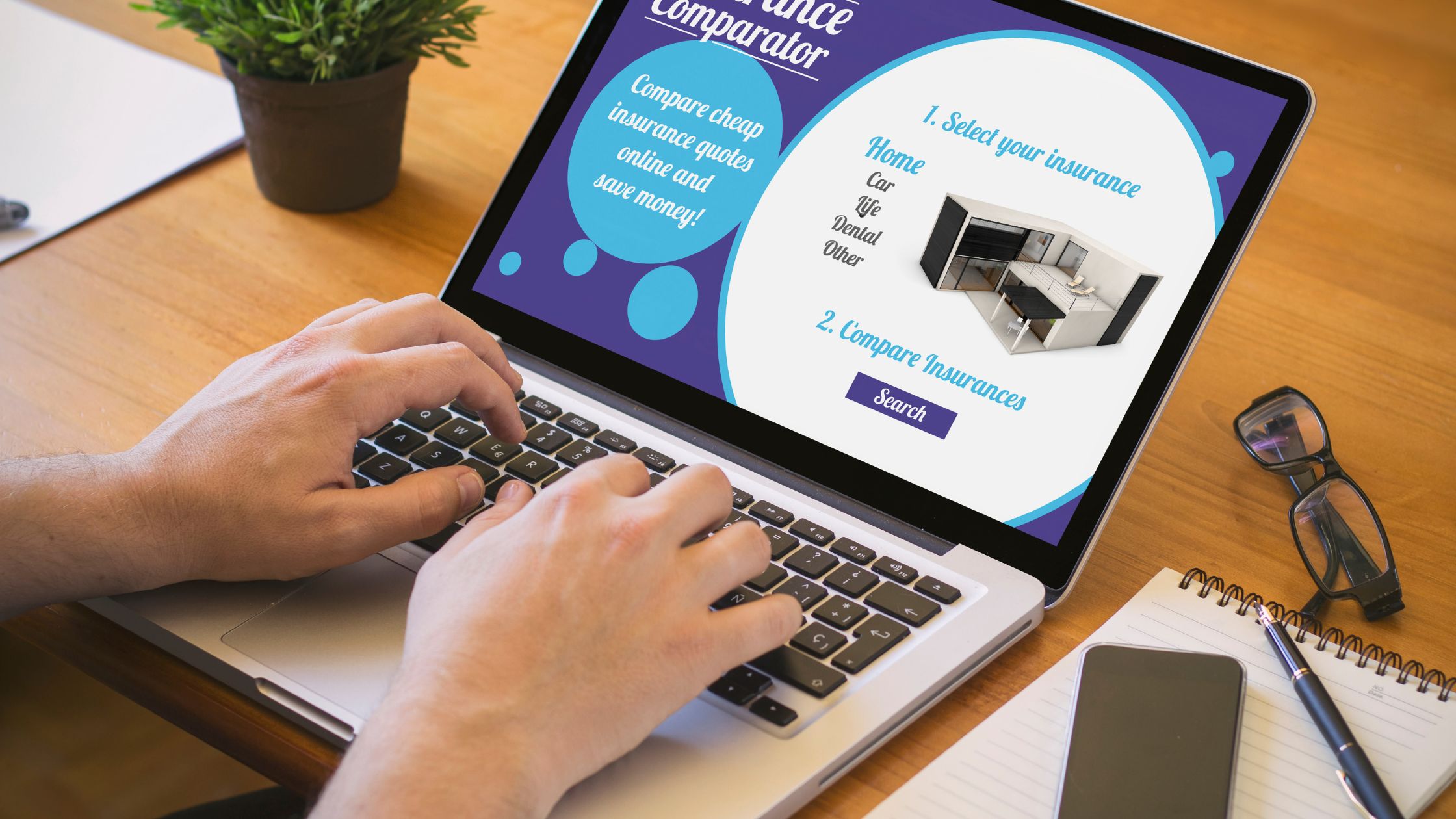In today’s digital age, finding the right insurance coverage has never been easier. Insurance comparison websites are powerful tools that allow consumers to compare various insurance products side-by-side, helping them make informed decisions. However, with the plethora of options available, choosing the best insurance comparison website can be a daunting task. This comprehensive guide will walk you through the essential factors to consider when selecting the right platform for your insurance needs.
Understanding Insurance Comparison Websites
Before diving into the selection process, it’s essential to understand what insurance comparison websites are and how they work. These platforms gather quotes from multiple insurance providers, enabling users to compare policies based on coverage, premiums, and other crucial factors. By using these sites, consumers can save time and money while ensuring they find the best policy to fit their needs.
Why Use an Insurance Comparison Website?
Using an insurance comparison website offers numerous benefits:
- Time Efficiency: Instead of visiting multiple insurance company websites, users can gather quotes in one place.
- Cost Savings: Comparison websites often highlight the best deals, enabling users to find lower premiums.
- Wide Selection: Users can compare a variety of policies, from auto to health insurance, all in one platform.
- Informed Decisions: With comprehensive information available, consumers can make better choices regarding their insurance coverage.
Key Factors to Consider When Choosing an Insurance Comparison Website
To select the best insurance comparison website, consider the following factors:
1. User-Friendly Interface
A user-friendly interface is crucial for a positive experience. Look for websites that are easy to navigate, with clear categories and straightforward processes for obtaining quotes. A well-designed site should guide you through each step without unnecessary complexity.
2. Reputation and Reviews
Before committing to a particular comparison website, research its reputation. Look for user reviews and testimonials to gauge the experiences of other consumers. Websites with a track record of positive feedback and reliability are more likely to provide accurate information.
3. Coverage Options
Ensure that the comparison website covers a wide range of insurance types, including auto, home, health, life, and more. The more options available, the better equipped you will be to find a policy that meets your needs.
4. Number of Insurers
The best comparison websites partner with a substantial number of insurance companies. This variety allows users to access a wide array of quotes, making it easier to find the most competitive rates. Look for sites that include well-known insurers as well as smaller, reputable companies.
5. Quote Accuracy
The accuracy of quotes is vital when using an insurance comparison website. Some sites may offer estimated prices that can differ significantly from the final quote. Look for websites that provide real-time quotes based on accurate data. This feature helps ensure that you have a clear understanding of the costs associated with each policy.
6. Customization Options
The ability to customize your quote request is a valuable feature. Look for websites that allow you to specify your preferences, such as coverage levels, deductibles, and other essential factors. This customization will enable you to receive quotes that are more aligned with your needs.
7. Educational Resources
A reputable comparison website should offer educational resources that help users understand different types of insurance and the policies available. Look for articles, guides, and tools that explain terminology, coverage options, and other important concepts.
8. Mobile Accessibility
In an increasingly mobile world, having a comparison website that is optimized for smartphones and tablets is essential. Ensure that the site is responsive and offers a seamless experience across devices, allowing you to compare insurance options on the go.
9. Customer Support
Good customer support can make a significant difference in your experience. Look for websites that offer multiple channels for customer assistance, such as live chat, phone support, or email. Having access to knowledgeable representatives can help you resolve issues and get answers to your questions.
10. Privacy and Security
When sharing personal information online, ensuring that the website prioritizes privacy and security is paramount. Look for websites that use encryption and other security measures to protect your data. Always review the site’s privacy policy to understand how your information will be used.
Step-by-Step Guide to Using an Insurance Comparison Website
Once you’ve selected a reputable insurance comparison website, follow these steps to get the most out of your experience:
Step 1: Define Your Needs
Before you begin comparing quotes, take some time to assess your insurance needs. Consider factors such as:
- Type of insurance (auto, home, health, etc.)
- Desired coverage limits
- Your budget for premiums
- Any specific requirements or preferences
Step 2: Visit the Comparison Website
Go to the chosen insurance comparison website. Familiarize yourself with its layout and features. Look for a clear option to start your quote comparison process.
Step 3: Enter Your Information
Provide the necessary information to receive quotes. This typically includes your name, address, age, and details relevant to the type of insurance you’re seeking. Be honest and accurate to ensure that you receive the most relevant quotes.
Step 4: Customize Your Quote
If the website allows for customization, specify your preferences regarding coverage levels, deductibles, and other factors. This step helps tailor the quotes to fit your unique needs.
Step 5: Review the Quotes
Once you’ve submitted your information, review the quotes presented to you. Take your time to compare each option based on premium costs, coverage details, deductibles, and additional features. Look for any exclusions or special conditions that may apply.
Step 6: Research Insurers
After narrowing down your options, take the time to research the insurance providers offering the quotes. Look for reviews, ratings, and financial stability assessments to ensure you’re choosing a reputable insurer.
Step 7: Contact Insurers for Clarifications
If you have questions about specific policies or need further clarification, don’t hesitate to contact the insurance providers directly. This step can help you understand the nuances of each policy and make a more informed decision.
Step 8: Make Your Decision
Once you’ve gathered all the information, it’s time to make a decision. Choose the policy that best fits your needs and budget. Ensure you understand the terms and conditions before finalizing your purchase.
Step 9: Complete the Purchase
Follow the website’s process to complete your insurance purchase. Ensure you keep a copy of your policy and any relevant documentation for your records.
Step 10: Review Annually
Once you have your insurance in place, make it a habit to review your coverage annually. Life circumstances change, and you may need to adjust your policy to reflect your current situation. Additionally, checking the comparison website periodically can help you identify better deals.
Also Read: 5 Tips to Get the Lowest Business Loan Interest Rates in 2024
Common Mistakes to Avoid
When using insurance comparison websites, it’s essential to avoid common pitfalls:
- Skipping Research: Don’t solely rely on the comparison website’s quotes; research the insurance providers thoroughly.
- Ignoring Fine Print: Always read the terms and conditions of any policy before committing.
- Focusing Solely on Price: While cost is important, also consider coverage limits, customer service, and the insurer’s reputation.
- Neglecting to Update Information: Keep your information current to ensure accurate quotes.
The Bottom Line
Choosing the best insurance comparison website can significantly impact your insurance shopping experience. By considering factors like user-friendliness, reputation, coverage options, and customization, you can find the platform that best meets your needs. Follow the step-by-step guide to make the most of your experience and avoid common mistakes. With the right tools and information, you can confidently navigate the insurance landscape, ensuring you find the best coverage at the best price.
By leveraging the resources available through comparison websites, you empower yourself to make informed decisions, ultimately leading to peace of mind in your insurance coverage. Whether you’re looking for auto, home, health, or life insurance, the right comparison website can simplify the process and help you secure the protection you need.




